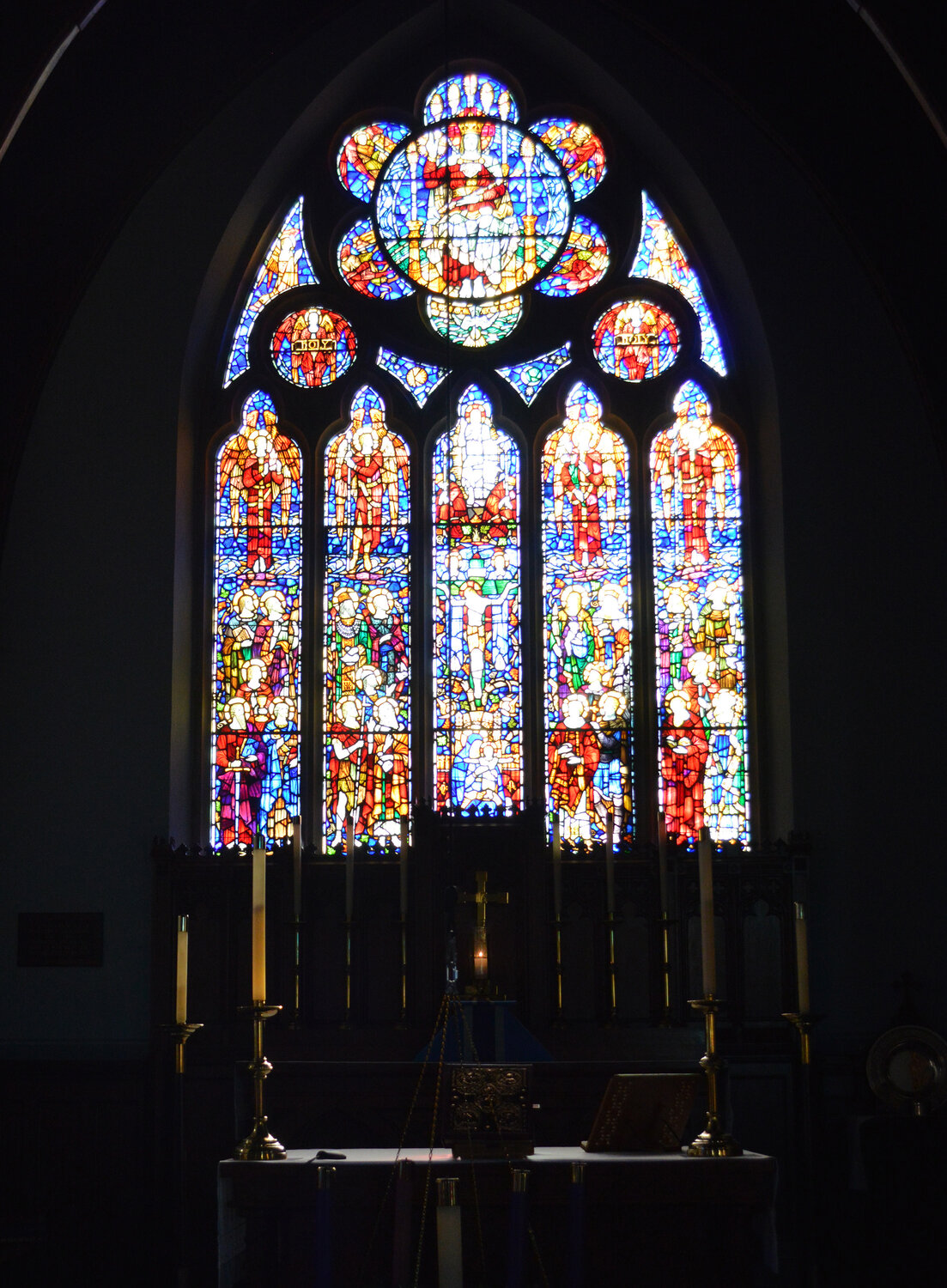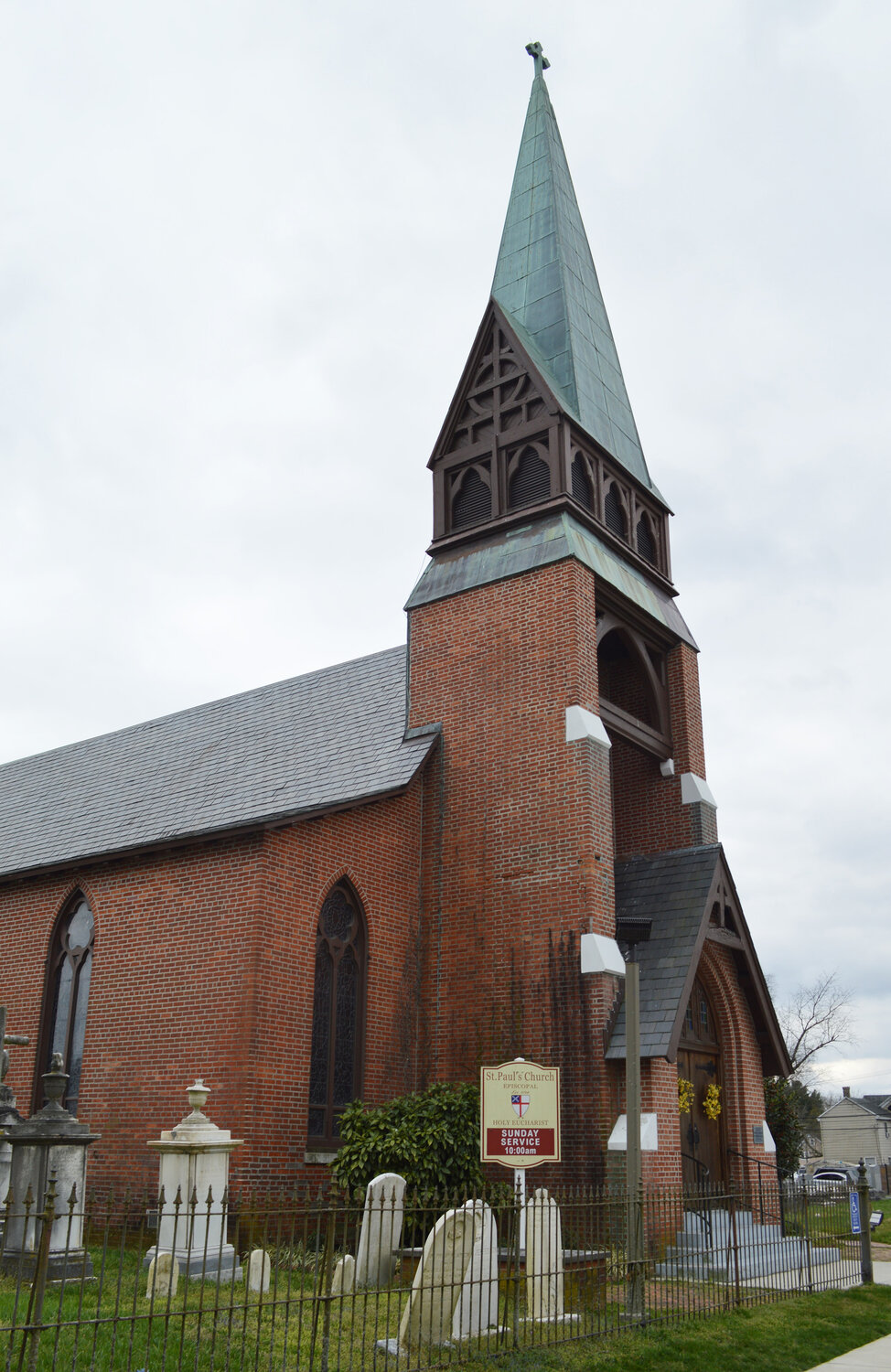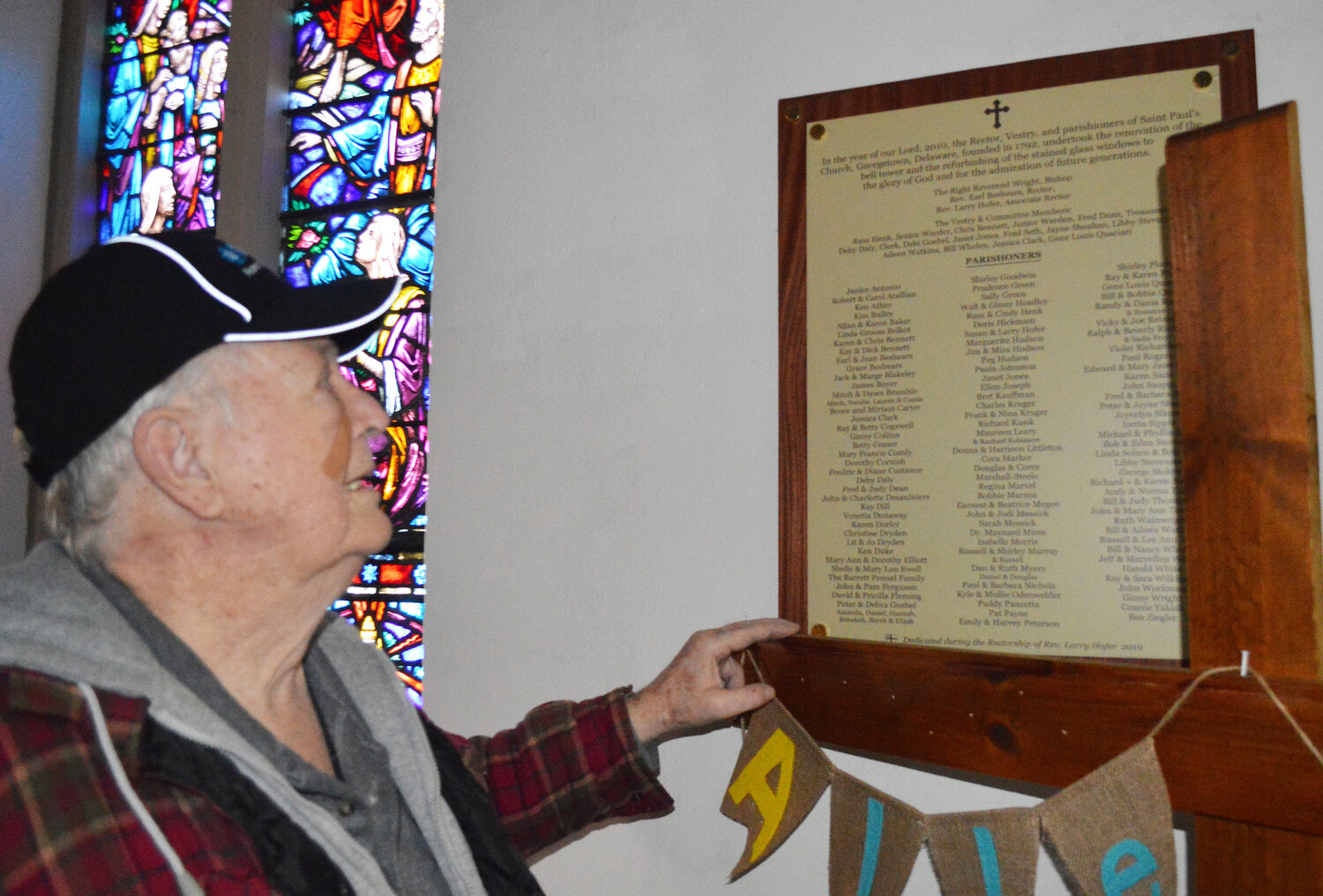Georgetown church mirrors town’s history
St. Paul’s has interesting past, many features
For the Christmas season, it turns green.
Come Easter, it’s always dressed in Sunday best.
At 180 years old, Georgetown's St. Paul’s Episcopal Church, a towering fixture at 122 E. Pine St., is one of the town’s oldest and most recognizable structures.

You must be a member to read this story.
Join our family of readers for as little as $5 per month and support local, unbiased journalism.
Already a member? Log in to continue. Otherwise, follow the link below to join.
Please log in to continueNeed an account?
|
Georgetown church mirrors town’s history
St. Paul’s has interesting past, many features
 By Glenn Rolfe
By Glenn RolfeGEORGETOWN — For the Christmas season, it turns green.
Come Easter, it’s always dressed in Sunday best.
At 180 years old, St. Paul’s Episcopal Church, a towering fixture at 122 E. Pine St., is one of the town’s oldest and most recognizable structures.
Its steeple rises high above the area, and inside, the building features some truly unique characteristics.
One is the tongue-and-groove wooden ceiling in the nave.
“It looks like the bottom of (Noah’s) ark,” said congregation member Angie Townsend. “It is a pretty church. One thing that brought me here was the architecture.”
Also setting the scene are the walls of the nave, which showcase numerous pieces of stained glass.
But the signature feature is the Te Deum, the stained-glass window behind the altar. It was given in memory of Margaret Saulsbury, 1856-75, by her brother, Willard Saulsbury, in his 1929 will.
The window is named after the ancient Latin hymn to the Father and Son, sung regularly during morning prayers.
Additionally, the church’s design provides a reflection of the Te Deum via a mirror on the opposite end of the nave.
Greeting visitors on another wall is a replica of 16th-century artist Raphael’s “Transfiguration.”
St. Paul’s atmosphere has been developing since the church began in 1794, several years after the founding of Georgetown.
It wasn’t until 1801 that a crude wooden chapel was built on lots at Front and Pine streets. Then, in 1804, the present site was purchased, and a frame building was dedicated in 1806. That gave way to the current brick structure in 1844, which was remodeled in 1881 in early Victorian Gothic style.
Dick Bennett, 85, serves as St. Paul’s longtime senior warden.
“It is not the oldest (building in town) for the simple reason it was not formed until after Georgetown became a town. The order was given about the same time as the town: You had to have an Episcopal church,” he said. “The first building was built in 1801, a wood structure. In later years, it was done away with. The original lots were at Pine and Front streets, but they never built (a full church) there. They bought three lots here. But the organization of the church was in 1794.”
With all that background, St. Paul’s was added to the National Register of Historic Places in 1979.
These days, average attendance at each service is about 25. The congregation overall totals approximately 50.
They are led by the Rev. Deacon Peter Cornell.
“We have members who retire, in Florida, and they come back,” said Ms. Townsend. “Some give money but don’t attend church. We have an elderly congregation.”
Mr. Bennett added, “We came up in the old school, like me.”
With the aging of the congregation, the church has evolved. For example, a popular Sunday school has given way to St. Paul’s English as a second language program, held on Mondays and Wednesdays. There is also a nursery.
But there have been some setbacks, too. The church sustained damage in a fire of unknown origin in 1987. The blaze destroyed the parish hall, the Sunday school classrooms and the sacristy. These were subsequently rebuilt, and fortunately, the sanctuary and nave were not damaged.
Further, maintenance is becoming a challenge. Last fall, the steeple underwent repair to stop water leakage into the church. It had also been repaired several times prior.
In 1998, a major renovation project was launched, Mr. Bennett said, including altar modification, lighting upgrades and other steeple improvements.
“And we need work now,” he added. “People don’t realize that, a building this size, constantly in this age, you’ve got things going on. We can’t get parts. Anything that breaks in here, we have to jury-rig them. But we try to keep it together.”
Te Deum
The panels on the Te Deum include Mary and child, Jesus in a crucifixion posture, the crucified Lord, the risen Lord, the enthroned Lord, the Gospels of Matthew, Mark, Luke and John, and the Holy Spirit.
‘Transfiguration’
According to the church's archives, the picture is a replica of Raphael’s famous piece, painted by one of his pupils, Juliano Romano. It was finished by the master himself.
At one time, the work hung in a Roman Catholic cathedral in Lima, Peru. During one of the many revolutions there, the bishop sought refuge in the U.S. Embassy, bringing some of the art from the cathedral.
Then, an American minister, John Randolph Clay, purchased
“Transfiguration” and other pictures, and brought them to the U.S. in 1860. He left it to his son, Randolph Clay, and it was inherited by Alice Clay MacLulich, who presented it to an Episcopal bishop in Delaware in 1918. As Ms. MacLulich’s family and husband were from the state, she wanted it placed here.
How the piece made its way to the Georgetown church remains a mystery.
Members and subscribers make this story possible.
You can help support non-partisan, community journalism.
Other items that may interest you










